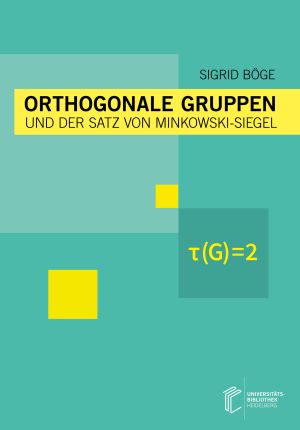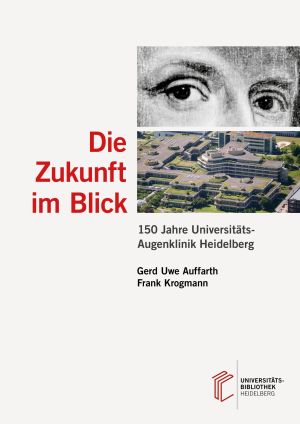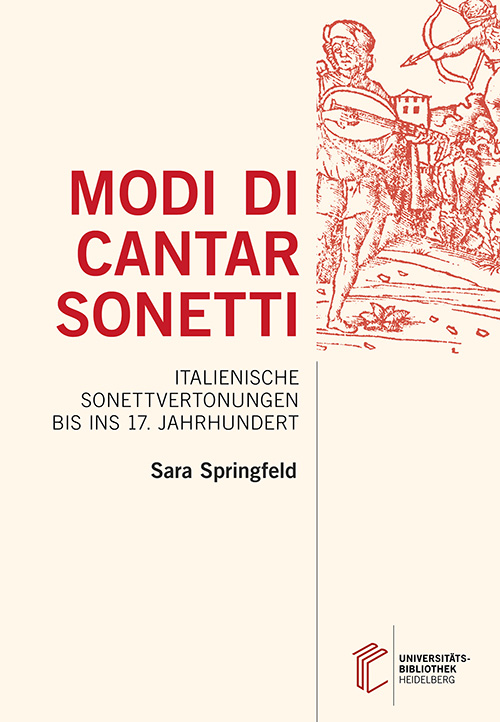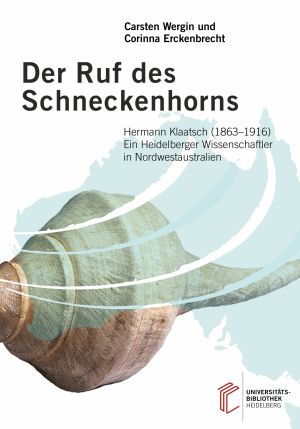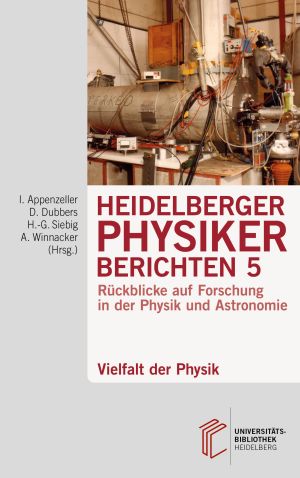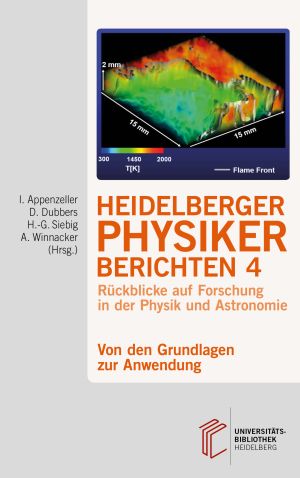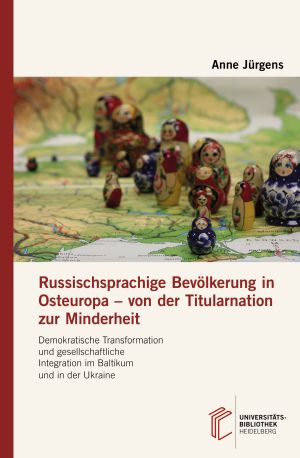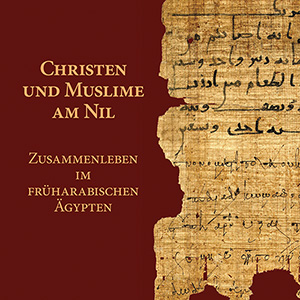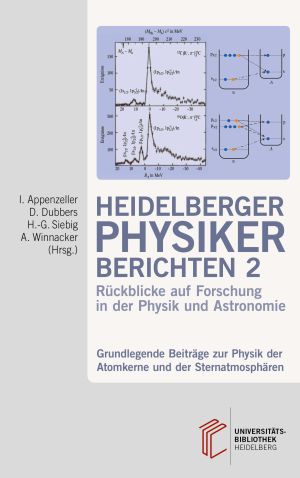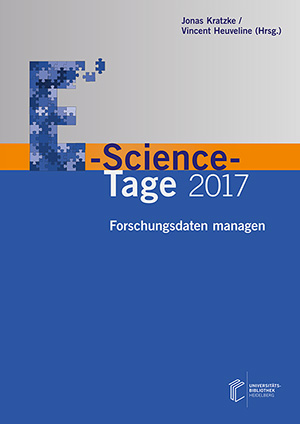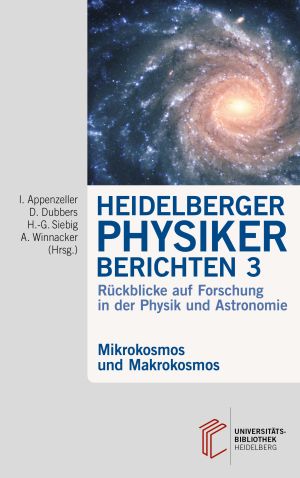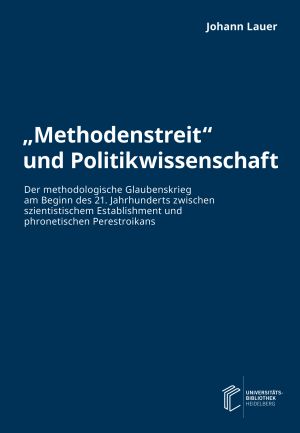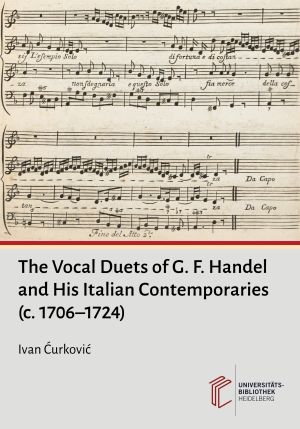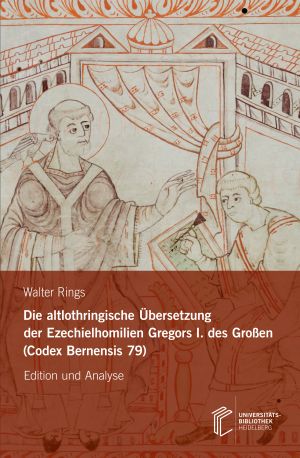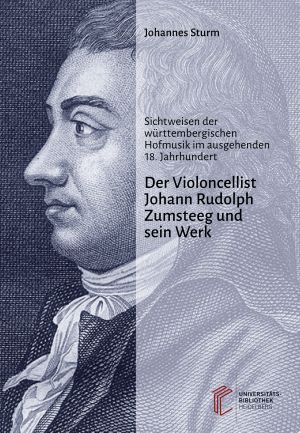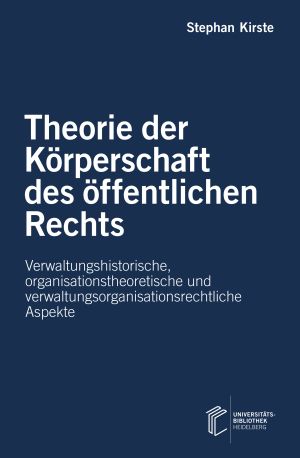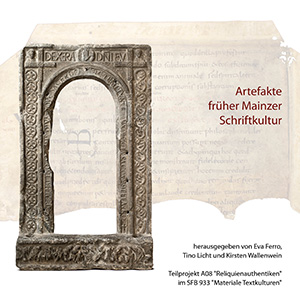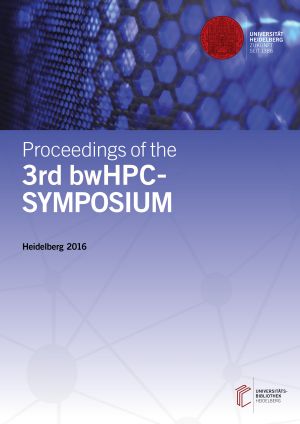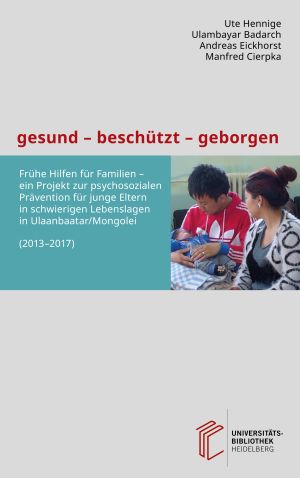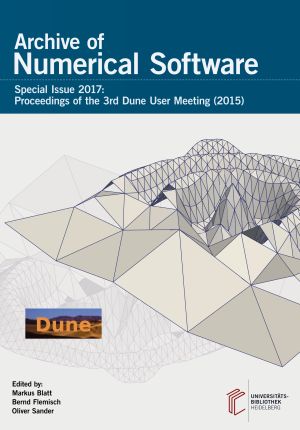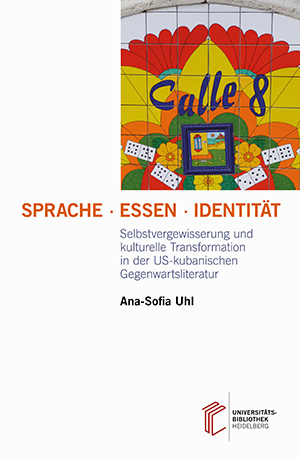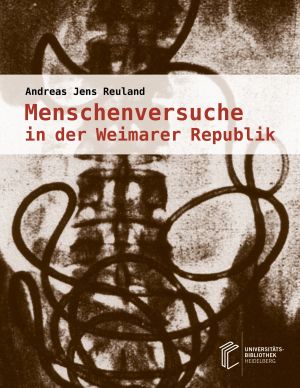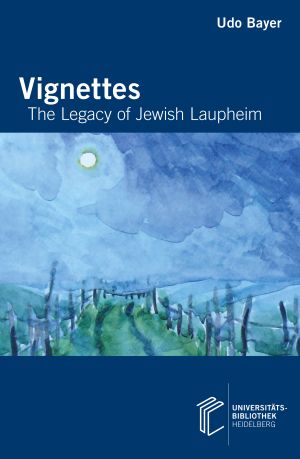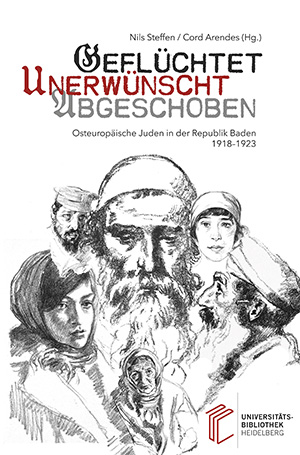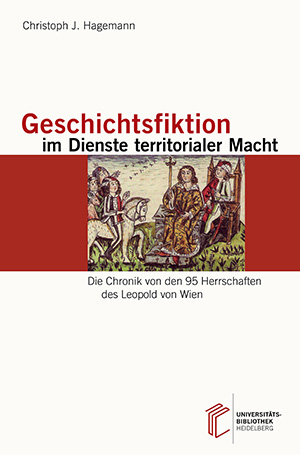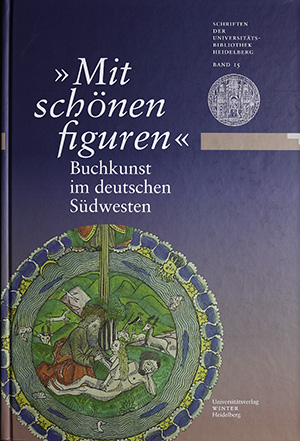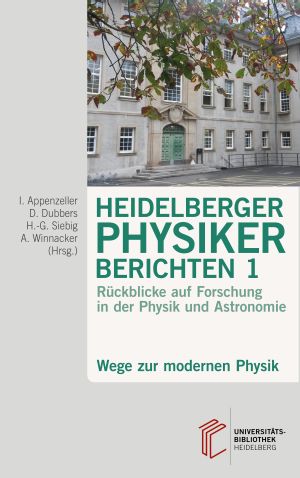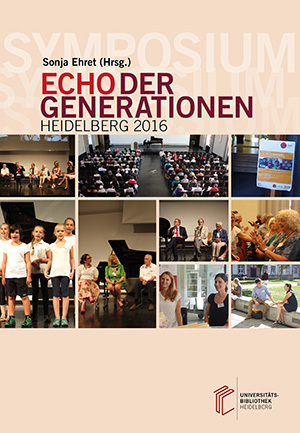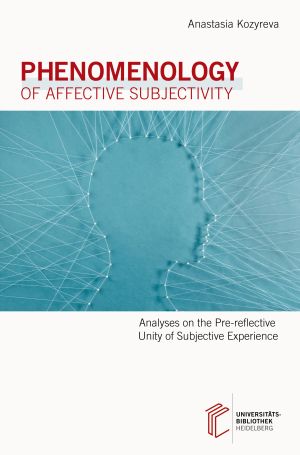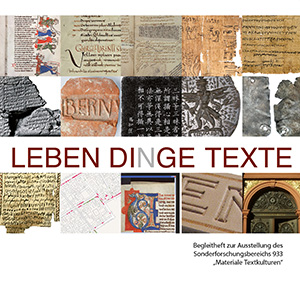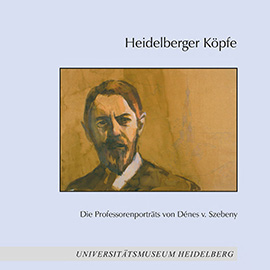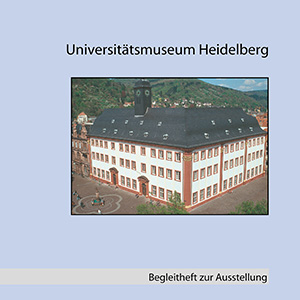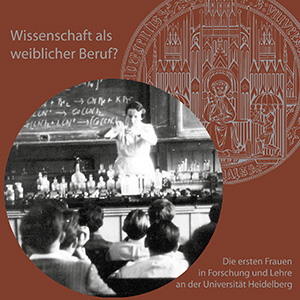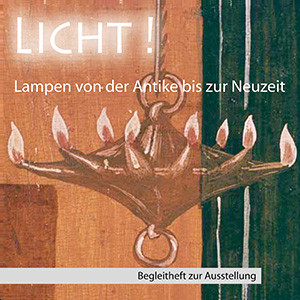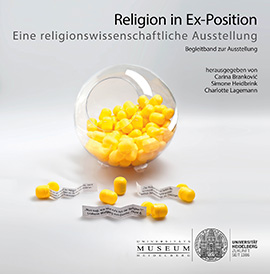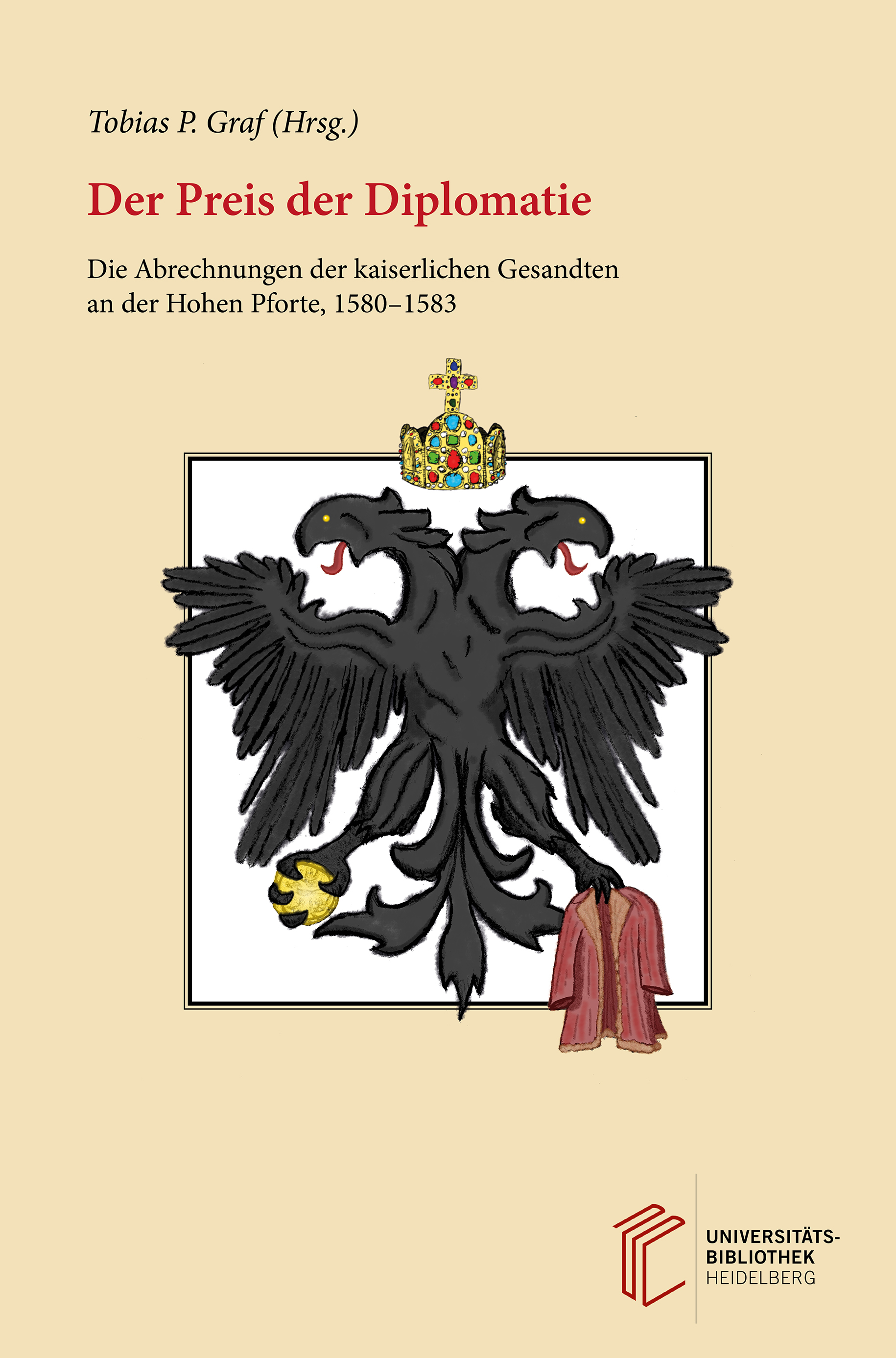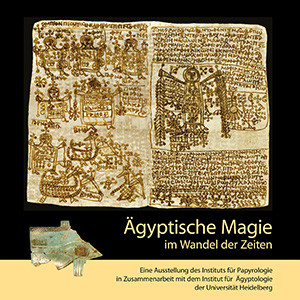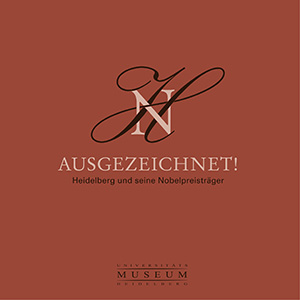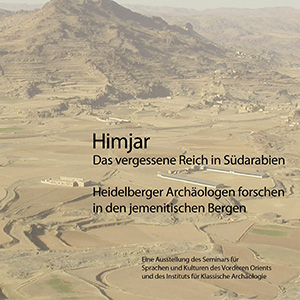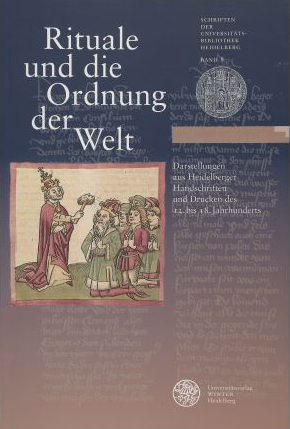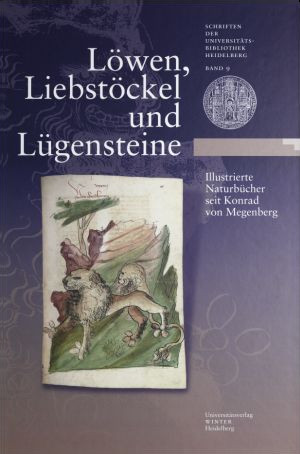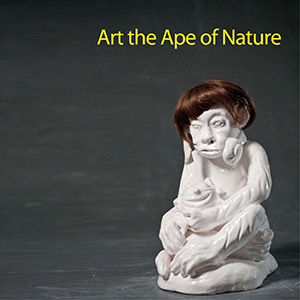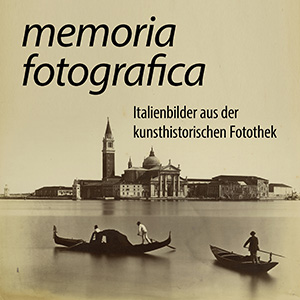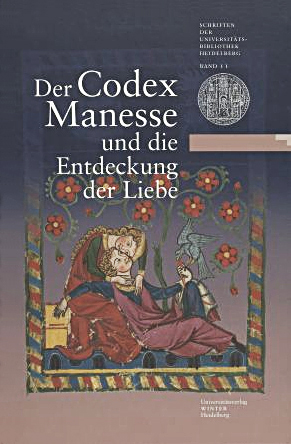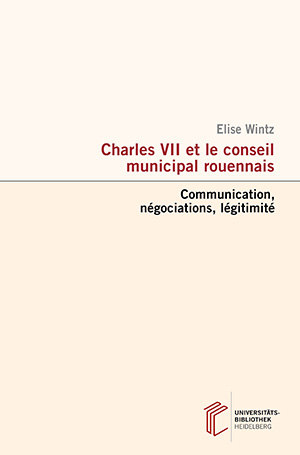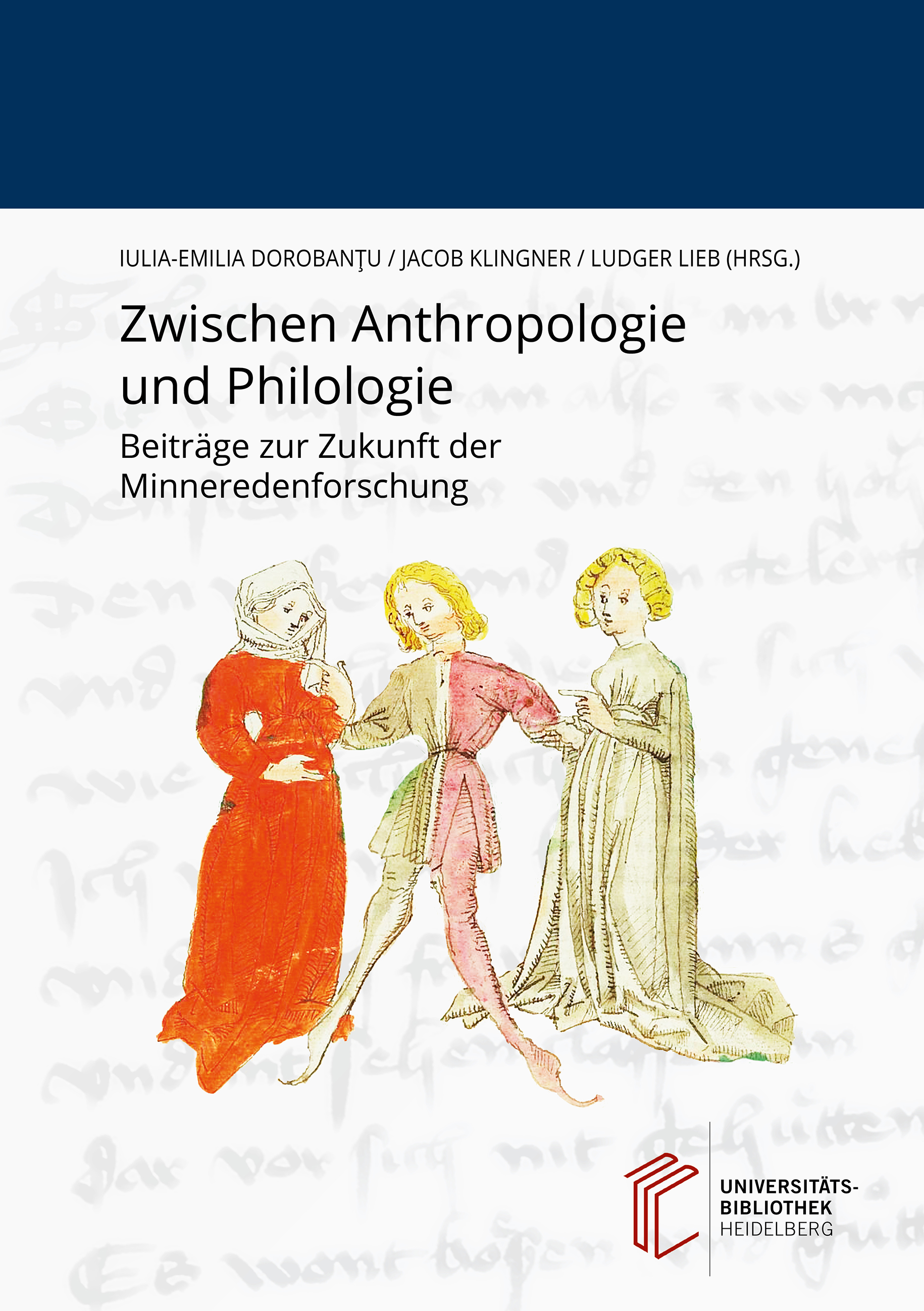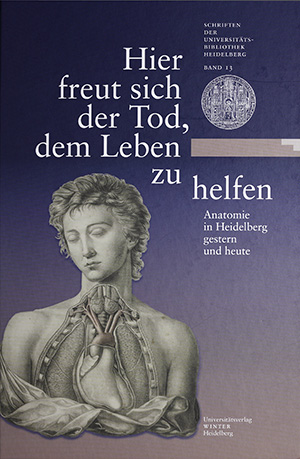Books
Orthogonale Gruppen und der Satz von Minkowski-Siegel: Vorlesung Wintersemester 2016–2017
This manuscript arose from a course which I gave during the winter term 2016/17 at the University of Heidelberg. The attraction for me consisted in showing in detail that the formula of Minkowski-Siegel in Siegel‘s paper from 1935, is equivalent to the statement that the Tamagawa number of the orthogonal group (for a positive definite quadratic form) equals 2. Everybody knows that, but nobody has presented the calculations in detail. Furthermore, one can use the formulas to consider representations of numbers by quadratic forms. The starting point for this is taken from “Quadratic forms” by M. Kneser. Furthermore, by proving the Minkowski inequalities in orthogonal groups, I describe Siegel domains and estimate their volume.
Die Zukunft im Blick: 150 Jahre Universitäts-Augenklinik Heidelberg
2018 blicken wir auf eine in diesem Buch sehr unterhaltsam dargestellte 150-jährige Geschichte der Universitäts-Augenklinik zurück, lernen die Menschen kennen, die die Klinik geprägt haben, sowie ihre akademischen Ehren und Verwicklungen. Die jeweiligen gesellschaftlichen Entwicklungen werden aufgezeigt, z. B. von der Einführung des Frauenstudiums („unerhört“) bis zu den ersten Assistenzärztinnen, wie ein Ordinarius berufen wird und wie viel Reichsmark ein „geheimer Hofrat“ verdiente.
Dieses Buch ist daher nicht nur für Mediziner, sondern für alle historisch Interessierten lesenswert.
Modi di cantar sonetti: Italienische Sonettvertonungen bis ins 17. Jahrhundert
The sonnet is considered one of the most enduring forms of European poetry. Throughout its almost 800-year history, it has not only challenged the artistic exploration and experimentation of poets, but also of composers. Whilst offering a range of creative possibilities for composers when setting a sonnet to music, they also faced problems when dealing with the asymmetrical stanza form of the text. This book concentrates on Italian sonnets from Francesco Petrarca to Giambattista Marino, which became popular text sources for the frottola, the madrigal and accompanied solo song in the sixteenth and seventeenth centuries.
Der Ruf des Schneckenhorns: Hermann Klaatsch (1863 – 1916). Ein Heidelberger Wissenschaftler in Nordwestaustralien
This publication introduces original and so far unknown material of the Heidelberg scholar Hermann Klaatsch (1863-1916) about the cultural heritage of Indigenous groups in Northwest Australia. Between 1904 and 1907 Klaatsch conducted extensive ethnographic research and collecting activities in Australia. The analyses of his most productive time in Northwest Australia 1905/1906 presents new approaches concerning the history, influence and dissemination of the German academic tradition, its understanding of cultures and research ethics. Thus, this book makes a crucial contribution to provenance research, repatriation and cultural heritage in a globalized world.
Heidelberger Physiker berichten - Rückblicke auf Forschung in der Physik und Astronomie: Band 5: Vielfalt der Physik
As with the previous volumes in the series „Report’s from Heidelberg’s Physicists”, in volume 4, intended to be the penultimate volume in the series, Heidelberg lecturers not only of Physics but also of Physical Chemistry, look back on the development of their scientific careers and developments in their subjects. This volume has a special emphasis on application, as is mentioned in the title, which in the tradition of physics in Heidelberg has played more of a marginal role. The subtitle of the volume points on the one hand towards the personal academic development of the individual lecturers, and on the other hand towards the general tendency for basic research to open itself to being applied. In the texts presented in this volume this development occurs methodically, by applying the possibilities that result from the use of highly developed methods in laser spectroscopy, modern optics and spin resonance, to pose practical questions, often of an interdisciplinary nature, in areas such as biology, medicine, process engineering and materials science. It is precisely this interdisciplinary aspect of the research being presented that is characteristic of a trend in science today.
Heidelberger Physiker berichten - Rückblicke auf Forschung in der Physik und Astronomie: Band 4: Von den Grundlagen zur Anwendung
As with the previous volumes in the series „Report’s from Heidelberg’s Physicists”, in volume 4, intended to be the penultimate volume in the series, Heidelberg lecturers not only of Physics but also of Physical Chemistry, look back on the development of their scientific careers and developments in their subjects. This volume has a special emphasis on application, as is mentioned in the title, which in the tradition of physics in Heidelberg has played more of a marginal role. The subtitle of the volume points on the one hand towards the personal academic development of the individual lecturers, and on the other hand towards the general tendency for basic research to open itself to being applied. In the texts presented in this volume this development occurs methodically, by applying the possibilities that result from the use of highly developed methods in laser spectroscopy, modern optics and spin resonance, to pose practical questions, often of an interdisciplinary nature, in areas such as biology, medicine, process engineering and materials science. It is precisely this interdisciplinary aspect of the research being presented that is characteristic of a trend in science today.
Die akademische Gerichtsbarkeit der Universität Heidelberg: Rechtsprechung, Statuten und Gerichtsorganisation von der Gründung der Universität 1386 bis zum Ende der eigenständigen Gerichtsbarkeit 1867
An academic court existed from the university’s early days on. In Heidelberg one can still find the Karzer, the University prison. The court held jurisdiction on all fields of law. The personal jurisdiction was not limited to students, as the court judged on professors, their domestic workers and certain craftsmen. In at least one case the court imposed the death penalty.
Russischsprachige Bevölkerung in Osteuropa – von der Titularnation zur Minderheit: Demokratische Transformation und gesellschaftliche Integration im Baltikum und in der Ukraine
A large number of Russian-speakers today live in the successor states of the Soviet Union. The contemporary social position of Russian-speakers is a result of their role in the democratic transition process and is based upon the desicion-making of new political elites. Despite neither having a strong homogeneity nor acting as a political or social cohort, the group is often perceived as a minority, hence partly placed in disadvantage both juridically and socioeconomically. The aim of this study is to address this problem by comparison of the development in the Baltic States, specifically in Estonia, and in Ukraine. Additionally, the crisis in Ukraine in 2014 is exemplified as an excursus.
Christen und Muslime am Nil: Zusammenleben im früharabischen Ägypten. Begleitheft zur Ausstellung im Universitätsmuseum Heidelberg vom 28. April bis 16. Juli 2017
After the Arabic conquest of Egypt initially little changed for the local population. Using Greek, Coptic and Arabic papyrus and archaeological objects, this exhibition illustrated the changes and continuities within Egypt's Early Arabic period compared to the end of the Byzantine era. Differences and similarities in religious belief and concepts of the afterlife were covered. Unaltered aspects of everyday life such as nutrition and clothing were demonstrated. Changes in administrative structures were taken into account.
Heidelberger Physiker berichten - Rückblicke auf Forschung in der Physik und Astronomie: Vol. 2: Grundlegende Beiträge zur Physik der Atomkerne und der Sternatmosphären
This second volume continues the series of reports by retired Heidelberg physics and astronomy lecturers about their scientific research and the history of their respective field of expertise. All essays are based on autobiographical talks which - for the current volume - were given during a lecture series which took place from 2006 until 2008. The talks refer to the development of physics during the second half of the 20th century and especially focus on the progress of our understanding of the physics of the atomic nucleus as well as the renaissance of astrophysics at Heidelberg University. Apart from scientific content they offer insights into the particular contexts and paths which led to new findings, while the texts reflect the spirit of the oral report and the authenticity of personal memories.
E-Science-Tage 2017: Forschungsdaten managen
The opportunities of digital research enhance scientific methodology, networking possibilities and insight. In particular, modern information systems support the development of research methods, assist in virtual collaboration and increase the value of research data. The present proceedings of the E-Science Days 2017 provide an insight into current developments for the management of research data. Visionary, discipline-specific approaches are presented, alongside innovative institutional solutions for the handling, publication and archiving of research data.
Keywords: research data; research data management; e-Science; digitisation; proceedings
Heidelberger Physiker berichten - Rückblicke auf Forschung in der Physik und Astronomie: Band 3: Mikrokosmos und Makrokosmos
"Reports from Heidelberg’s physicists" is initially planned as a four volume work, in which former lecturers in physics and astronomy at the University of Heidelberg look back at their lives in science and the history of their subjects. The contents of this volume consist of autobiographical lectures presented as part of a lecture series between 2015 and 2016. The emphasis of this series was on the development of physics in the last third of the twentieth century and the start of the twenty-first century. This period saw an expansion of the traditional research areas covered by physicists in Heidelberg, as well as an increase in the number of important current research topics including some taken from practical applications. As well as their scientific content, these contributions offer insights into the respective conditions and the way that scientific results are arrived at. The texts reflect the vitality of the spoken lectures and the authenticity of these personal recollections.
„Methodenstreit“ und Politikwissenschaft: Der methodologische Glaubenskrieg am Beginn des 21. Jahrhunderts zwischen szientistischem Establishment und phronetischen Perestroikans
This monograph focuses on the dispute known in political science as “Methodenstreit.” Its beginnings date back to the 19th century, and at the beginning of the 21st century it can justifiably be called a “methodological science war”.
Firstly, an ad fontes reconstruction by means of methodical books and classic literature of naturalism, positivism and scientism is undertaken, demonstrating that this is not an issue of the mainstream but the
establishment. Afterwards, the opposite opinion is presented, using the example of the phronetic Perestroikans who undertook a last great rebellion against the establishment.
The limits of applied methodologies are presented in detail, of the scientistic (normative rational choice theory) as well as the phronetic kind (applied phronesis). Furthermore, a case is made for the necessity for
a genuinely practical (normative, pragmatic and technical) methodology complementary to an empirical (descriptive, explanatory and prognostic) one.
The Vocal Duets of G. F. Handel and His Italian Contemporaries (c. 1706-1724)
The vocal duets of G. F. Handel are distinguished by a greater musical and dramaturgical diversity compared to the duets of his contemporaries, but this diversity has not yet been systematically examined in different contexts. This study investigates them in two genre traditions, that of the chamber duet and that of the so-called “dramatic duet”, a component of genres such as opera, cantata and serenata. It concentrates on London in the period 1706–1724 in order to explore to what extent Handel's treatment of duets differs from the contributions by his Italian contemporaries, who were either active in London at the time (e. g. G. Bononcini) or whose works were performed parallel to his.
Die altlothringische Übersetzung der Ezechielhomilien Gregors I. des Großen (Codex Bernensis 79): Edition und Analyse
Towards the end of the 12th century, in the city of Metz, the homilies on the prophet Ezekiel by Pope Gregory 1st were translated into Old French, or more exactly, into Old Lorrainese. This translation represents one of the extremely rare literary texts written in Old Lorrainese. Above all, this edition pursues linguistic aims: its detailed glossary, its chapters on grammar, and its scripta-studies want to make a contribution to the very fragmentary knowledge of Old Lorrainese. Furthermore, the appendices on Ezekiel, on Pope Gregory, and on the allegorical interpretation of the Bible try to show these homilies and their author in their historical context.
Der Violoncellist Johann Rudolph Zumsteeg und sein Werk: Sichtweisen der württembergischen Hofmusik im ausgehenden 18. Jahrhundert
Johann Rudolph Zumsteeg (1760-1802) was one of the most eminent figures of court music during the reign of Karl Eugen of Württemberg. Therefore Zumsteeg’s personal network is examined in this in-depth study, including his cello teacher Agostino Poli, the poet und musician Christian Friedrich Daniel Schubart and Friedrich Schiller.
Using his cello music as a reference point unkown biographical aspects of Zumsteegs life are illustrated in connection with his interaction with other prominent figures all of whom represent the exciting history of court music in 18th century Württemberg.
Theorie der Körperschaft des öffentlichen Rechts: Verwaltungshistorische, organisationstheoretische und verwaltungsorganisationsrechtliche Aspekte
Based on a theory of organizations and the history of public administration, this book analyzes the law of independent public agencies or corporations in German administrative law (from cities, commercial and professional chambers, to territorial associations and public cooperatives). The independent public corporation cannot be distinguished from other public legal persons by its objectives or the form of their execution (self-administration as self-reliant execution of tasks), but by the differentiation of its organizational structure (self-administration through participation of its members) and by the integration into public administration of societal potentials to self-organization. Based on this structure, the diversity of its appearances in German public law can be systematized; this organizational structure also reveals some of the potentials of the independent public corporation.
Artefakte früher Mainzer Schriftkultur
Despite severe losses the distinctive early medieval translation originating in Mainz offers enough material to convey former quantity and quality. Based on its remains, the labels, the subproject A08 of SFB 933 “Material Text Cultures” organized a small exhibition. This was supported by the Cathedral Museum and grew into the special exhibition “In Gold geschrieben” (Written in Gold) to which a comprehensive catalogue was published. On the basis of these articles, this themed issue documents descriptions of artefacts and material concerning the Middle Ages until the Carolingian era. The selection offers a virtual tour around the early written culture in Mainz.
Proceedings of the 3rd bwHPC-Symposium: Heidelberg 2016
The bwHPC-Symposium is an annual event within the concept for high performance computing in Baden-Württemberg (bwHPC). The focus is on the presentation of the progress and the results of scientific computing projects. In addition, the event also provides the opportunity for an active dialogue between users, the bwHPC service providers and the bwHPC support teams. The present conference volume includes articles of lectures and posters from the 3rd bwHPC-Symposium, which took place on October 12, 2016 in Heidelberg.
gesund – beschützt – geborgen: Frühe Hilfen für Familien – ein Projekt zur psychosozialen Prävention für junge Eltern in schwierigen Lebenslagen in Ulaanbaatar/Mongolei (2013-2017)
How can young mothers and fathers be supported during the critical phase of their lives when they become parents, if traditional learning and the activation of parenting skills via observation and action in the context of everyday life is no longer guaranteed, as is the case in changing societies?
The prevention program Das Baby verstehen (Understanding the Baby) developed by Manfred Cierpka and his team served as the basis for the project gesund - beschützt - geborgen (healthy – protected – secure). An explorative study in Mongolia examined the conditions for the transfer as well as the acceptance of the program by young parents in the capital Ulaanbaatar.
Proceedings of the 3rd Dune User Meeting (2015): Archive of Numerical Software - Special Issue 2017
Dune, the Distributed and Unified Numerics Environment, has been under continuous development for more than 13 years. Several European institutions participate in this development, and over time, a substantial user community has evolved. In order to establish and foster personal contacts within the community as well as between users and developers, a first Dune User Meeting was held in Stuttgart in 2010, followed by a second one that took place in 2013 in Aachen. In 2015, the third Dune User Meeting was held in Heidelberg from 28th to 29th of September. More than 30 users and developers from five European countries attended, presented Dune-related work and engaged in lively discussions. Ten presentations resulted in contributions to these proceedings.
Sprache – Essen – Identität: Selbstvergewisserung und kulturelle Transformation in der US-kubanischen Gegenwartsliteratur
Calle Ocho in Miami’s district Little Havana represents a „home away from our homeland“ (Pérez Firmat) for many Cuban-Americans. In the context of migration and diaspora, language and food play an outstanding role and are important media of communication that create identity. Talking as well as eating are everyday activities that ensure survival – in a social and a material sense. Both identity-constituting as well as identity-reproducing elements are flamboyantly often addressed in contemporary autobiographies of Cuban-American writers. This book investigates the question: What significance is given by the respective authors to „language“ and „food“ as systems of communication for identity formation processes of Cubans in the United States?
Menschenversuche in der Weimarer Republik
Human experimentation without the consent of the subjects were common in the Weimar Republic. Unknowing tot he patients, experiments of all kinds were carried out on them in the context of therapeutic research or for the purpose of gaining general knowledge. Most of the patients experimented on were used to suffering, were submissive to and dependend on authority and were voiceless and destitute. As a price for their inpatient treatment, a free availability of their bodies was expected for scientific trials.
The physician and Social Democratic Reichstag representative Julius Moses pointed out these deficits towards the end of the Weimar Republic. Under the heading "100 rats and 20 children! Working-class children as guinea pigs," he published an accusation against the experiments of a clinician in 1928 in the periodical the Vorwärts, causing a public scandal. The protest against the inhumane conditions in clinical research during the Weimar Republic and Moses' "Struggle against the experimental rage" ultimately led to the development of research guidelines.
Unchanged reprint of the original 2004 edition.
Vignettes: The Legacy of Jewish Laupheim
A great number of notable personalities who achieved extraordinary success in a wide variety of fields came from the rural community of Laupheim in Württemberg. They were not only remarkable for a small town like Laupheim, but also unique in all of Germany. Among these eminent personalities are, for example, co-founder of the Württembergische Vereinsbank and art-enthusiast Kilian von Steiner, artist and designer Friedrich Adler, composer Moritz Henle, author Siegfried Einstein, and last but not least world-class high jumper Gretel, from the entrepreneurial family Bergmann, who was the inspiration for the movies Berlin 36 and Hitler’s Pawn. For the first time, Laupheim expert Udo Bayer combines a concise historical overview of the former German-Jewish community of Laupheim with six vignettes of these distinguished people.
Geflüchtet, unerwünscht, abgeschoben: Osteuropäische Juden in der Republik Baden (1918–1923)
Roughly 10 million people worldwide are fleeing due to World War One. Among them “Ostjuden”, Jews who had to leave their homes in the countries of Eastern Europe, who are fleeing from murderous anti-Semitic pogroms. Their safe haven: America. But the United States close their borders. The routes to America through the German ports of Hamburg and Bremen turn into dead ends for many refugees. Thousands of stranded people try to make Baden their new home.
They arrive in a country which is scarred by war and torn apart by political conflicts. A country that can hardly provide enough food, housing, and work for its own population. They face a nation looking for scapegoats, thinking to find them in the German Jewish communities. The newly arriving Jewish refugees are often undesired.
Students of Heidelberg University researched the life stories of “undesirable foreigners” in local archives and examined the reactions of the German authorities and the public to the refugees. Their research results are published in this book and are accompanied by selected sources from contemporary files, letters, parliamentary debates, and newspaper articles.
Geschichtsfiktion im Dienste territorialer Macht: Die Chronik von den 95 Herrschaften des Leopold von Wien
An examination of the so-called „Austrian Chronicle of the 95 Rulers“ by Leopold von Wien, which he compiled in the vernacular language and prose for Duke Albrecht III at the end of the 14th century, is the the central theme of this book. The assemblage for a total of 95 monarchs is remarkable for its predominantly fictional succession of rulers, with which the compiler traces Austrian history from the biblical, patriarchal period to his present day. In view of adaptations, assessments and the accounts of more than 80 somewhat illustrious authors, the question arises: How could such a historiographical disaster occur and why was it apparently so popular?
"Mit schönen figuren": Buchkunst im deutschen Südwesten
The transition from handwritten to printed books occurred in stages between the middle of the 15th century and around 1500. For over half a century both forms existed side by side. The relationship between the handwritten and the printed book ranged, via changing and reciprocal influences, from pure imitation to competition between the technical and functional means of expression.
The focus of both catalogue and exhibition are artistic book decorations from specific genres: brush painted ornate decorations and borders, figurative pen and ink drawings and overlay miniatures are contrasted with series of wood cuts and printed vignettes.
The exhibition guides visitors through the years 1430 to 1530, using selected examples from the collections of the Württembergian State Library Stuttgart and the University Library Heidelberg. As well as the technical and cultural interplay of this transition phase with relevant examples of the appearance of books, the roles of those commissioning, selling and owning books are also presented. They often significantly influenced the expressive form and content of book decoration as books were also a form of status symbol.
Heidelberger Physiker berichten: Rückblicke auf Forschung in der Physik und Astronomie: Vol. 1: Wege zur modernen Physik
In this series of, as presently envisaged, four volumes, former members of the renowned Faculty of Physics and Astronomy of the University of Heidelberg report on their scientific work and the history of their field. The individual contributions are based on autobiographic talks presented between 1991 and 2017. Much of the vividness of oral presentations and the authenticity of personal recollections has been preserved in these texts.
In captivating reports the authors describe their scientific lives and their paths to discoveries, embedded in an often eventful life and a turbulent historic environment. Although the individual careers may differ considerably, the reader will discover many common traits. He will learn fist-hand how science happened, and still works, even in today's epoch of interdisciplinary research and large international projects. The present first volume of this series includes talks centered around the history of physics around the middle of the twentieth century. The following volumes will report on the more recent developments.
Symposium Echo der Generationen: Heidelberg 2016
In the Symposium Echo of Generations results of the project of the same title are combined with international and well-known research work and theories. Relations between the young and the oldest old are characterized by mutual understanding, symmetry and bonding, whereby new and until now unexpected perspectives are possible, opening doors between generations. Curiosity and attraction between the young and the very old not only aim at historical experiences, but at the persons themselves. In the panel discussion prospective tasks of a society for all ages are discussed. In such a society young and old can successively actualize their selves reciprocally.
Phenomenology of Affective Subjectivity: Analyses on the Pre-reflective Unity of Subjective Experience
As contemporary philosophy, psychology, and neuroscience take an increasing interest in the problems of consciousness and the nature of self-awareness, we are now witnessing a remarkable shift in the understanding of the very foundations of mind and subjectivity. From both the everyday and scientific points of view, it has become clear that subjectivity can no longer be regarded as a uniform kind of being, defined as cognitive, conscious, or mental, and that it cannot be understood as detached from its embodied and affective dimensions, its interaction with the world and other living beings. Given these changes, how can we understand what constitutes unity of subjective experience beyond the level of explicit cognition and self-reflection? What is it that makes up the unity of one’s life beyond narratives and autobiographical memory? In order to answer these questions, this book takes a phenomenological approach to the pre-reflective level of subjective experience and its connectivity. Drawing on Husserl’s analyses of passive syntheses as well as contemporary philosophical and psychological research, it investigates how affectivity contributes to the understanding of the unity of consciousness, of perceptual organization, memory, and the unconscious. Accordingly, the first part of the book questions the basic conditions responsible for the unified and coherent way in which subjective experience is organized. The second part addresses the unity constituted by associative and affective connectivity of consciousness. Finally, the third part explores the pre-reflective level of past experience and the affective dimension of memory.
Leben Dinge Texte: Begleitheft zur Ausstellung des Sonderforschungsbereichs 933 „Materiale Textkulturen“
The exhibition "LEBEN DINGE TEXTE" (LIFE OBJECTS TEXTS / LIVING TEXT) presents artefacts that are inscribed. The exhibits originate from societies before the invention of printing: cuneiform script clay tablets from Mesopotamia, ancient graffiti, magical papyrus amulets, stamped roofing tiles, a dog leash superscribed with gemstones. Such "script bearing" artefacts can help investigate how the writing material affects the meaning of the text and vice versa. Furthermore, they illustrate that writing was not only for reading, but also associated with acts and rituals.
With this exhibition, the Collaborative Research Centre (SFB) 933 "Material text Cultures" presents intermediate results of its research. SFB 933 is funded by the Deutsche Forschungsgemeinschaft (German Research Foundation) and unites 50 researchers and scholars of Heidelberg University and Hochschule für Jüdische Studien Heidelberg.
Heidelberger Köpfe: Die Professorenporträts von Dénes v. Szebeny
On the occasion of the University of Heidelberg’s anniversary in 1986, the artist and graphic designer Dénes v. Szebeny, born in Hungary and resident in Heidelberg since 1973, created an extensive series of drawn portraits of Heidelberg University professors. The series is laid in the 19th and early 20th century, the earliest being that of the natural law philosopher Samuel von Pufendorf (1661-1668), the youngest depicting the physicist Walther Bothe (1932-1957).
Universitätsmuseum Heidelberg: Begleitheft zur Ausstellung
The catalogue is the accompanying booklet for the permanent exhibition of the University Museum of Heidelberg as it was presented to the public in 2006. Since 1996, the University Museum has been located in the baroque building of the “Old University” built in 1712. Whereas the actual museum is situated in the ground floor of the old building, the Alte Aula can be found in the first floor; moreover, the Studentenkarzer can be visited in the adjoining building. Both the Alte Aula and the Studentenkarzer represent the highly traditional University’s history.
The three exhibits are described in the three rooms of the museum, in which the history of the University from the formation in 1386 to the anniversary in 1786 (room A), of the University in the 18th and 19th century (room B) and of the University in the 20th century (room C) is represented. Furthermore, the catalogue includes information about the Alte Aula and the Studentenkarzer.
Wissenschaft als weiblicher Beruf? Die ersten Frauen in Forschung und Lehre an der Universität Heidelberg
The development of historical research in German universities over the last twenty years has been strongly influenced by the academic fields of cultural and social history, and by gender issues. There exist, therefore, along with individual studies and several comprehensive comparisons of doctoral and the “Habilitation” (postdoctoral lecture qualification) qualifications as “specifically German”, also studies of gender-specific opportunities for access to university education and research careers. Until now, there has been no broad investigation into the work of early women in research and teaching in the context of Heidelberg University. The aim of this volume, developed by a small group of history students, is to close this gap.
Licht! Lampen von der Antike bis zur Neuzeit. Begleitheft zur Ausstellung
An unusually large number of Roman lamps were discovered in one of the biggest Roman cemeteries excavated in Southern Germany, in Heidelberg. A description of these lamps is being published by Andreas Hensen. As he stated, almost two centuries ago the Heidelberg archaeologist and ancient
studies professor Friedrich Creuzer coined the term “Lychnologie” (study of artificial lighting). Thus, it is fitting that the International Lychnological Association (ILA) hosted its third international congress in September 2009 in Heidelberg, the native town of Lychnology. On this occasion, and in interdisciplinary cooperation, we prepared this short exposition of Classical, Provincial Roman and Medieval Archaeology in the course of a seminar in the winter semester of 2008/09.
Religion in Ex-Position: Religious Studies on Display
This companion volume results from the exhibition Religion in Ex-Position (2014/2015), a teaching project, organised by lecturers of the Institute for Religious Studies at the University of Heidelberg (Germany) and museum experts in co-operation with the University Museum Heidelberg. It used various thematic key aspects and practical examples to address a multitude of approaches from the fields of Religious and Cultural Studies, e.g. a selection of approaches by historical and recent scholars of religion along with criticism of religion, the difficulty of defining religion and the different perspectives on religion. The result was a hands-on exhibition, focussing on theories and methods of the discipline of Religious Studies, whose history traces back to the early 20th century, illustrating the diversity and plurality of the study of religion.
The book consists of an exhibition catalogue, which presents the exhibits and installations on display including the accompanying texts, along with an essay collection, where different authors from a multitude of academic backgrounds discuss the exhibition as a whole or focus on certain aspects. The central question “How to research religion(s)?” invites readers to become acquainted with the scholarship of religion, to adopt different perspectives and to challenge views. At the same time it emphasises the importance of Religious Studies for culture and society nowadays.
Der Preis der Diplomatie: Die Abrechnungen der kaiserlichen Gesandten an der Hohen Pforte, 1580–1583
In the wake of the recent material turn in historical scholarship, the material aspects of early modern diplomacy have begun to receive increasing attention. How was diplomacy funded? What objects were exchanged as part of diplomatic gift giving? Who was deemed important enough to be presented with gifts and at times even with bribes?
The present edition of previously unpublished expenditure accounts from the collection of the Haus-, Hof- und Staatsarchiv in Vienna drawn up by the Imperial ambassadors in Istanbul Joachim von Sinzendorff and Friedrich Preiner provide answers to these and many other questions asked by students of this new diplomatic history. With its extensive index and annotations which focus especially on identifying historical actors—and particularly Ottoman dignitaries—the volume is a helpful resource for historical research as well as teaching.
Ägyptische Magie im Wandel der Zeiten: Eine Ausstellung des Instituts für Papyrologie in Zusammenarbeit mit dem Institut für Ägyptologie der Universität Heidelberg
The institute for Papyrology of the University of Heidelberg is the proud owner of one of the world’s most significant corpora of magical papyri. The small but excellent collection of Coptic parchments, most of which also include drawings, probably originating from around the beginning of the second millennium. Already in 1934, this collection was presented together with a codex containing the legend of Cyprian in the volume “Griechische, koptische und arabische Texte zur Religion und religiösen Literatur in Ägyptens Spätzeit” edited by Adolf Grohmann and Friedrich Bilabel. This volume announced the then-recent acquisition of two unique grimoires – one of which had been considered lost since 1945. One of the most famous scholars in this domain, P. Angelicus Kropp, had previously been able to publish a text of an earlier version of the other grimoire, in 1966; P. Heid. Kopt. inv. 686 (before: P. Heid. inv. 1686); the second grimoire, however, had been believed to be lost forever, with no earlier versions known of.
Ausgezeichnet! Heidelberg und seine Nobelpreisträger. Begleitbroschüre zur Ausstellung im Universitätsmuseum Heidelberg
Every year, the awarding of the Nobel Prize in the fields of Physics, Chemistry, Medicine, Literature, Economy and Peace is anticipated with great excitement. Often, the decisions of the Nobel Prize jury provoke emotional discussions. The Nobel Prize is more than just a science prize – it is the most desired and highest-profile award of all. Scientists, who are handed a medal and a diploma by the King of Sweden in a magnificent and globally recognized Nobel Prize Award Ceremony, are considered outstanding representatives of their disciplines. In the history of ideas and science the Nobel Prize winners attain immortality.
Himjar: Das vergessene Reich in Südarabien
More than three decades ago, the Romano-Germanic Central Museum in Mainz presented the results of a perennial restoration of the remains of two royal statues which turned out to be almost two and a half meters high in a small exhibition. The statues stood in the classical contrapposto, arranged as if they were statues of heroes, and were signed by a Greek artist named Phokas. For most archaeologists and historians of the time, the discovery of these artifacts was the first discovery of evidence of an Old South Arabic kingdom in today’s Yemen, which had, been totally unknown until then. However, in later years this discovery was widely forgotten.
Rituale und die Ordnung der Welt: Darstellungen aus Heidelberger Handschriften und Drucken des 12. bis 18. Jahrhunderts
Rituals establish order in this world. This is particularly true for eras such as the Middle Ages and the early modern period, when no written constitutions, codes of law and administrative rules regulated human cohabitation. By being repeatable, symbolically charged acts, rituals did not only illustrate social order and legitimate rule but created authority, priority and hierarchy in the first place. The importance of rituals for European societies of the pre-modern era becomes evident when considering the attention that is paid to them by contemporary writers and artists. This volume is dedicated to the power of the ritual within politics, religion, society and law which is illustrated by the illuminated manuscripts, woodcuts and prints of the 12th to the 18th century from the vaults of Heidelberg University Library.
Löwen, Liebstöckel und Lügensteine: Illustrierte Naturbücher seit Konrad von Megenberg
Konrad von Megenberg is considered a late medieval pioneer of German scientific prose directed at a lay audience. On the occasion of his seven-hundredth birthday, Heidelberg University Library devoted an exhibition to his best-known work, “buch von den natürlichen dingen”, also known as “Buch der Nature” (“book of natural things”or “Book of Nature”), a prototype of illustrated natural history books. The Heidelberg Bibliotheca Palatina comprises as many as four medieval manuscripts of this work. Two of these manuscripts are richly illustrated.
According to the medieval scholastic worldview, Konrad von Mengenberg starts his investigation with humans and the cosmos, before systematically organizing “the natural things” of the three kingdoms of nature – zoology, botany, and geology. In the late Middle Ages the tradition of this work was combined with memorable illustrations. Like the texts, they were based on a long tradition and were themselves widely received until the modern era.
More information and "Virtual exhibition".
Art the Ape of Nature: Eine Ausstellung zeitgenössischer Kunst
"Art the Ape of Nature – the monkey motif in contemporary art" was the title of a middle seminar at the Institute of Art History in Heidelberg. The result can be seen in the exhibition "Art the Ape of Nature – An exhibition of contemporary art" in the University Museum in Heidelberg in 2013. In the seminar "Art the Ape of Nature – the monkey motif in contemporary art" we discussed the handling of monkeys and apes in art with respect to well-known representatives of recent history of art. Among them were the British postwar painter Francis Bacon, the polit-activist font photographer Barbara Kruger, the readymade kitsch artist Jeff Koons, the expressive "painter monkey" Jörg Immendorff, the feminist action and poster artists Guerrilla Girls or the Street "Artivist" Banksy. In addition, the role of gorillas, chimpanzees and baboons in Darwin caricatures of the 19th century has been studied, also in today's evolution cartoons or in music videos of the Bloodhound Gang, Peter Fox or Modeselektor. Also the Darwinist and spiritualist Gabriel von Max, the "naive" exotic monkeys painter Henri Rousseau or the Dadaist Francis Picabia were discussed in a session each, furthermore the lesser-known sculptor Hugo Reinhold (died 1900) or the Young British Artist Angus Fairhurst (died 2008).
For the exhibition we could convince artists from London, Munich and Vienna, which not only, as Anja Priska or Gerd Dengler, made works for our exhibition available, but who also, like Larissa Kopp, Eva Blanché and Florian Aschka, created new works specifically for the exhibition.
memoria fotografica: Italienbilder aus der kunsthistorischen Fotothek
For the first time ever, the exhibition memoria fotografica. Italienbilder aus der kunsthistorischen Fotothek offers a glimpse of the more than 75,000 photographs depicting architecture, paintings, drawings and sculptures that are part of the photographic collection of the Institut für Europäische Kunstgeschichte (IEK, Institute for European History of Art) of Heidelberg University. "Italian topography" is by far the largest section within the collection and contains exquisit works by famous photographers such as the Alinari brothers, Carlo Naya, Giorgio Sommer and James Anderson, as well as a variety of different techniques such as albumen and gelatine prints.
Der Codex Manesse und die Entdeckung der Liebe: Eine Ausstellung der Universitätsbibliothek Heidelberg, des Instituts für Fränkisch-Pfälzische Geschichte und Landeskunde sowie des Germanistischen Seminars der Universität Heidelberg zum 625. Universitätsjubiläum
Saget mir ieman, waz ist minne? (Tell me, what is love?) This question, asked by the poet Walther von der Vogelweide inquires about the nature of love and has occupied many travelling singers, noblemen, and even clerics since the High Middle Ages. A variety of texts and images bear witness to the fact that it was no longer enough for a knight to possess the desired lady. He rather strived to win her heart. The many-voiced discovery of the topic of “Minne”, i.e. courtly love, as erotic attraction between man and woman did not just influence the relation between the sexes, it also changed the self-conception of the nobility, and the manners within the courtly society.
The songs and images in Codex Manesse capture this change. The magnificent large-format manuscript is a unique collection of works of Minnesang, offering a large variety of genres and forms, dating from the time of the Staufen dynasty to the post-classical era. The miniatures depicting the poets within courtly scenes, festivities and tournaments, have for a long time shaped the modern perception of the chivalrous Middle Ages. However, the Codex Manesse itself can be interpreted as a historical review: Its aim was to create a written compilation of fading songs which were until then passed on orally. Without this record many texts would be lost today.
By presenting Codex Manesse and other valuable manuscripts from the vaults of Heidelberg University Library, the catalogue illustrates the discovery of love during the High Middle Ages.
More information and "Virtual Exhibition"
Charles VII et le conseil municipal rouennais: Communication, négociations, légitimité
October 1449: Charles VII and his men are at the doors of Rouen, ready to lay siege to the city. The French king claimed to be the kingdom and the city’s legitimate ruler, as he had been sacred king of France. Henry VI, king of England, was however also claiming to be king of France, a title he had inherited from his father. After thirty years under Lancaster rule, how did the people of Rouen welcome Charles VII? And how did he convince them of the legitimacy of his reign as king? Focusing on the sources of the city council, this book analyses the relation between king and subjects in Rouen in the years 1449-1461.
Zwischen Anthropologie und Philologie: Beiträge zur Zukunft der Minneredenforschung
This volume collects various contributions to “Minnereden” (Late Medieval love poems in the German language) research, and provides insights into into the current trends in research into this field. The volume was inspired by the conference on "Anthropologie und Philologie: Die Zukunft der Minneredenforschung. Diskussionen auf der Grundlage des Handbuchs Minnereden", which took place in the International Academic Forum Heidelberg in the autumn of 2013. The contributions discuss new approaches to the Minnereden corpus, and to the narrative potential and to textuality of Late Medieval love poems.
Hier freut sich der Tod, dem Leben zu helfen: Anatomie in Heidelberg gestern und heute
The study of human anatomy, of the relationships and connections between organs, tissues and cells, together with their structures, was established in the 16th century as a fundamental component of medical research and teaching. Since then, anatomy methodologies have changed considerably. Where once it was sufficient to expose components of the body with a dissecting knife and simply describe what was seen with the naked eye, current-day anatomists have access to many additional, highly sophisticated methods for observation and measurement including, for example electron microscopy and computer tomography. These new methods have opened up many new possibilities of analysis and investigation for this area of science.
This exhibition includes many different aspects of anatomy: in addition to the current activities of the Heidelberg Institute for Anatomy and Cell Biology in teaching and research, it covers the Institute’s history going back to the year 1805. The focus of the historical component of the exhibition is on the Institute’s past directors, whose research and publications made many influential contributions to the development of the field. A third component of the exhibition introduces the anatomical preparations and models that have been an important component of applied anatomy since the 18th century. This is presented through a focus on the history and artefacts of The Heidelberg Anatomical Collection. A final component of the exhibition covers the development of anatomical illustrations in printed works ranging from the 16th to 19th century, of which the great majority are the property of Heidelberg University Library.

